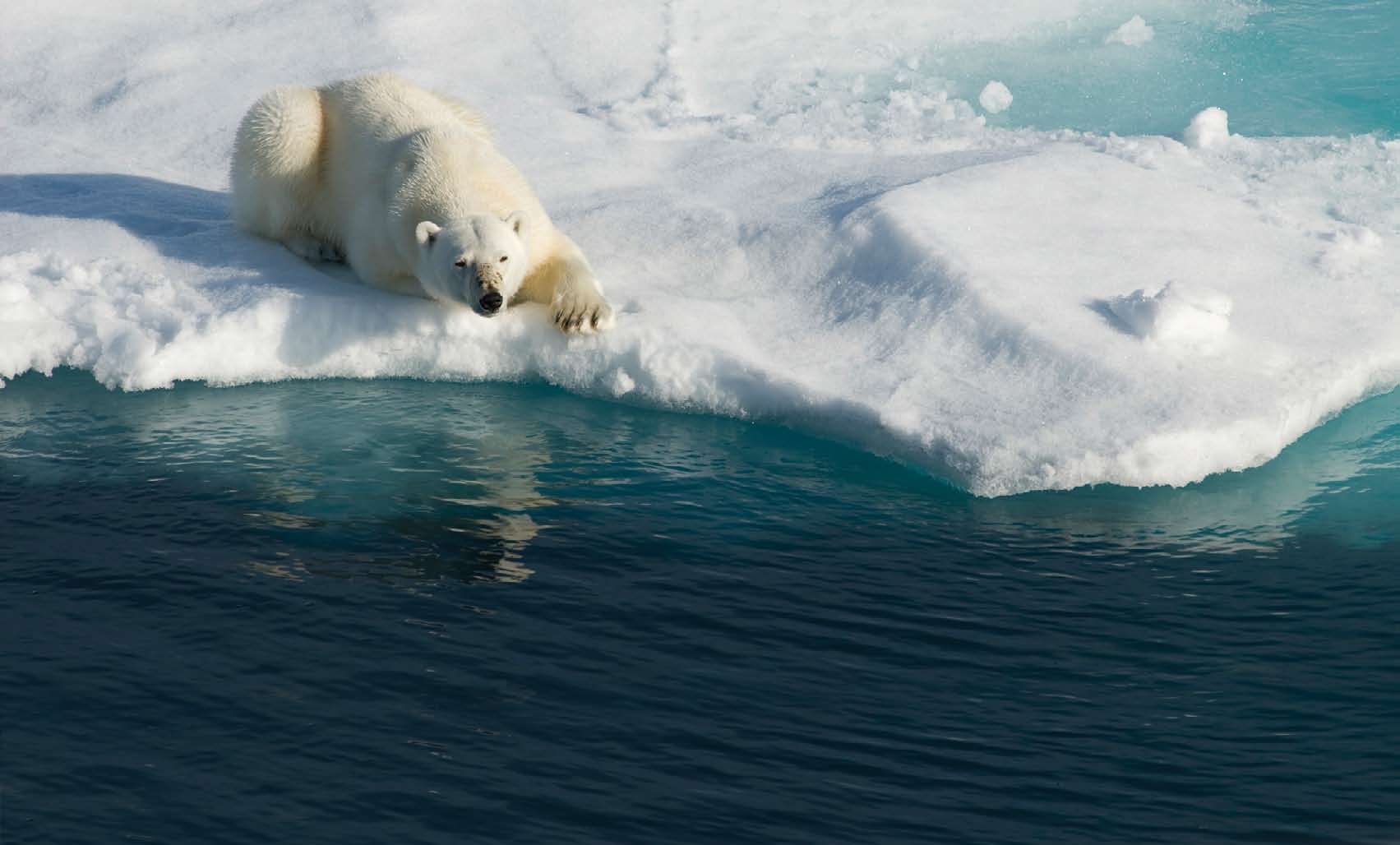A reanalysis of the Arctic climate should help researchers better understand the melting of sea ice, which is drastically reducing the hunting grounds of the polar bear.
The sea-ice melt that last summer opened the Northwest Passage through the Canadian Arctic for the first time since satellite records began in 1978 may signal a significant climatic shift that has serious economic and ecological implications for wildlife, natural resources and world politics.
To better understand the evolving climate of the Arctic region, researchers have begun working to merge a decade of detailed atmospheric, sea, ice and land surface measurements into a single computer model-based synthesis. The coupling of these immense data sets will produce complex and instructive descriptions of the changes occurring across the normally frigid, remote region.
An interdisciplinary collaboration of scientists, led by David H. Bromwich, Ph.D., a senior research scientist with the Polar Meteorology Group of the Byrd Polar Research Center and a professor with the department of geography at The Ohio State University, will “reanalyze” Arctic data from the past decade at three-hour intervals, 15-kilometer distances and 70 layers from the surface of the Earth to the top of the atmosphere. The study area encompasses the Arctic Ocean, the surrounding landmasses and the rivers that drain into the ocean — an enormous area of nearly 29 million square miles.
“We used to think of places like the Arctic as ‘data sparse;’ they are remote, largely unpopulated with limited measurements of temperatures, winds, etc., and have challenging environments,” said Dr. Bromwich, who as a member of the Intergovernmental Panel of Climate Change shared a Nobel Peace Prize with former Vice President Al Gore in 2007. “With the introduction of space-borne measurements over the last few decades, researchers have been inundated with vast amounts of information. Today, the trick is to figure out how to effectively use all the diverse information sources.”
To make sense of the numbers, Dr. Bromwich and his team turned to the Ohio Supercomputer Center for help with the four-year project. The scientists will fill about 350 terabytes of OSC storage space and employ 1,000 cores of the Center’s IBM 1350 Opteron cluster over several months to create detailed visualizations.
“OSC is providing the project with resources that will allow us to complete our work in a limited time frame,” Dr. Bromwich said. “Other computation centers likely could not have provided the CPU cycles or stored such vast amounts of data.”
The National Science Foundation, as part of the International Polar Year observance, funds the Arctic System Reanalysis project, the first comprehensive environmental reanalysis project led by the academic community. IPY is a large scientific program focusing on the Arctic and the Antarctic from March 2007 to March 2009.
This observance comes “amidst abundant evidence of changes in snow and ice: reductions in extent and mass of glaciers and ice sheets, reductions in area, timing, and duration of snow cover, and reductions in extent and thickness of sea ice,” according to IPY. “Changes in snow cover and sea ice have immediate local consequences for terrestrial and marine ecosystems.”
Each summer, polar bears are being forced from their seal-hunting grounds on the melting sea ice, endangering their limited populations. Hundreds of thousands of acres of peat moss may decompose and begin to release higher amounts of methane and carbon dioxide, potentially accelerating the accumulation of greenhouse gases in the atmosphere, according to Dr. Bromwich.
Arctic countries are already jostling for political control of one of Earth’s last remaining frontiers, he said. Russia, Denmark and Canada have claimed the Arctic sea floor in hopes of securing valuable oil, gas and mineral rights. Canada also is claiming political control over shipping lanes that pass by that country’s northern islands, and Russia may follow suit, as passages near its northern shores are also nearly clear of ice.
“The summer ice melting has been advancing much faster than any of the climate models predicted,” said Dr. Bromwich. “The Arctic region is a very heterogeneous environment, and it’s extremely important that we better understand what’s happening there in order to predict the future more accurately.”
--
Project lead: David H. Bromwich, Ph.D., The Ohio State University
Research title: Arctic system reanalysis, International Polar Year (IPY) project
Funding source: National Science Foundation
